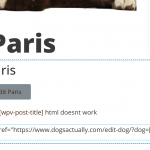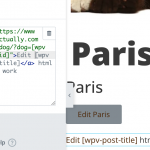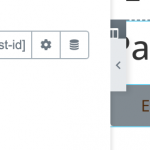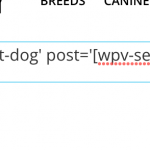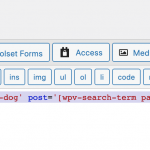Hi there,
I hope I read this right and you're looking to show edit links on the Single CPT pages via elementor.
I create all my websites using toolset and elementor now and it works a real treat for me!
I don't use content templates unless adding taxonomy images onto archive pages.
I have a solution that worked for me;
Take a look at my solution here;
https://toolset.com/forums/topic/edit-content-link-in-elementor-not-working/page/2/#post-1648443
Basically, without going into too much detail;
Create the link like;
<a href=" yoursite.......com / edit-dog-form-page / ?partner_id=[wpv-post-id]" target="_blank">Edit Dog Form</a>
The dots and spaces are to stop toolset.com making it a 'Hidden Link'
Here you would change the "edit-dog-form-page" to the slug of the page your form has been insered into.
If you would like to open in a new tab keep the 'target="_blank"', or the other way is to remove the 'target="_blank"' and have the form redirect the the post page.
You would need to enter this snippet into your functions.php or into toolset's custom code area within the settings menu;
function func_edit_dog_form() {
if(isset($_GET['partner_id'])){
return do_shortcode("[cred_form form='edit-dog-form' post='".$_GET['partner_id']."']");
}else{
return "Please go back and click an edit dog form link";
}
}
add_shortcode('display_edit_dog_form', 'func_edit_dog_form');
Here you would change the
cred_form form='edit-dog-form'
to your CRED form's slug.
If you need to create edit links for multiple CPTs you would edit the;
function func_edit_dog_form() {
to
function func_edit_whatever_you_want_here_form() {
AND
add_shortcode('display_edit_whatever_you_want_here_form', 'func_edit_whatever_you_want_here_form');
Activate the code within the settings area.
Duplicating the form, but not changing the above values with result in a site error, so I always test the site after entering custom code in a new tab, which allows me to edit the code within the snippets area, bringing the site back up, should there be any errors.
Create your new 'Edit Dog Form' page and add the form using a shortcode field, entering;
The "display_edit_dog_form" words within the shortcode, come from the snippet we created earlier.
This should do the trick.
The code within the snippet area takes care of the rest.
Within the post that I linked, further through, you can read about how to show the link to only the post author.
What I did here was just that, but also create another link using elementor's visibility controls, and assigning that link to admins only.
This way, admins had a link and the post author also had their own link on the respective pages, where as page guests had 0 links.
This could also be used in conjuction with;
https://toolset.com/forums/topic/conditional-display-based-on-url-parameter/
I really hope this helps.
I work with elementor and toolset every day now and have been doing for approx. 2 years, please hit me up if you would like any more help.
Take Care
Steve
